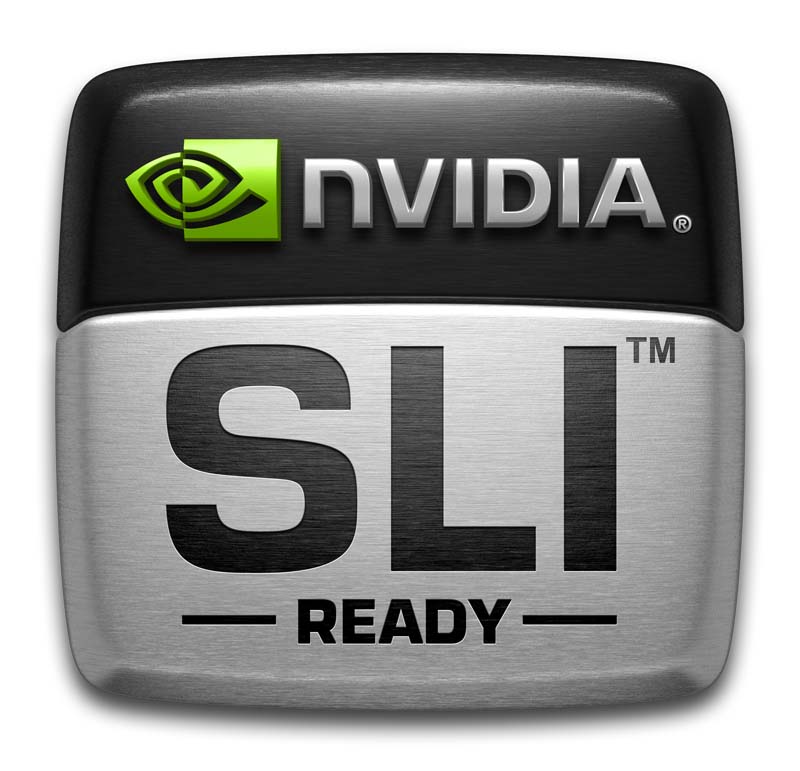Unsupported Gigabyte EX58 Can Do SLI
There is a nifty little trick that can enable SLI on a non-SLI motherboard by simply flashing the BIOS.
There's nothing cooler than a little cheat, a work-around that opens up a whole new world in squeezing out all the performance juices a PC can generate. Granted, sometimes a little tweak here and a little tweak there can generate the opposite effect, rendering the machine literally "bricked" in a sense that the damage is mostly irreversible. However, BIOS modifications are nothing to sneeze at, and require a bit more knowledge to manipulate than average users may think. With that said, forcing SLI on a non-SLI motherboard is not something Tom's will officially endorse, and may very well void the motherboard's warranty if the process goes haywire.
Apparently, Tweaktown has stumbled upon an article in Taiwanese magazine PC Home Advance that explains how to enable SLI support on a motherboard without Nvidia's prized SLI certification. According to Nvidia, motherboard manufacturers using Intel's X58 chipset must pay for the company's official certification if they want to enable SLI support in Nvidia's ForceWare drivers. But what if the motherboard can offer SLI by flashing it with another certified BIOS? Would that be cheating Nvidia? Would that even work?
For Gigabyte's EX58-UD4, the method does work according to the PC Home Advance article. The magazine managed to flash the motherboard with the latest F6 Gigabyte EX58-UD4P (note the "P") Nvidia SLI-certified BIOS and actually enable SLI on the cheaper EX58-UD4 model. Ironically, the EX58-UD4 offers CrossFire multi-GPU setups right out of the box, so by flashing the BIOS, the board thus supports both CrossFire and SLI. Coolness.
In order to get the SLI mode set up, users must grab a copy of Spiflash.exe, a DOS-based flashing program, as other flashing programs such as QFlash and @BIOS will not work. Next, reboot the PC using a DOS boot disk (or USB thumb drive for that matter) and enter the DOS command prompt. From there, users simply need to enter the command "SPIFLASH EX58UD4P.F6" and voila! The BIOS flash update will commence. Once that completes, users simply reboot the PC back into Windows; SLI support should now be readily available.
While the process sounds easy, enabling SLI on a non-SLI motherboard is not guaranteed to work, and may even render it useless. However, it will be interesting to see if consumers can get the SLI up and running, and if Gigabyte and/or Nvidia will release any kind of statement in regards to this SLI "cheat."
Get Tom's Hardware's best news and in-depth reviews, straight to your inbox.

Kevin Parrish has over a decade of experience as a writer, editor, and product tester. His work focused on computer hardware, networking equipment, smartphones, tablets, gaming consoles, and other internet-connected devices. His work has appeared in Tom's Hardware, Tom's Guide, Maximum PC, Digital Trends, Android Authority, How-To Geek, Lifewire, and others.
-
hairycat101 I'd like to see such a work around for other non-SLI boards. For that matter, though, I would prefer to have Nvidia support this through its drivers. It would benefit them the most anyways. Think about all of the Crossfire boards out there that they could tap into if they just allowed SLI on any board.Reply -
Greatwalrus Ah, I love Gigabyte, even though I don't have one of these boards just yet. When I build a new system later this year, I plan on using a Gigabyte X58.Reply -
jeverson I don't see why nVidia would raise a big stink over it. It means they are selling more video cards. I'm guessing they make more money off the video card sales than off the licensing of a line of motherboards. If they did make a stink out of it, all it would show was that nVidia is just a whore and all they care about is the $$.Reply -
hairycat101 jeversonI don't see why nVidia would raise a big stink over it. It means they are selling more video cards. I'm guessing they make more money off the video card sales than off the licensing of a line of motherboards. If they did make a stink out of it, all it would show was that nVidia is just a whore and all they care about is the $$.Reply
So if they don't care and it increases sales and helps the bottom line its ok, but if they feel that this somehow doesn't help thier bottom line, then they are whores? How does that work? -
scryer_360 The thing is, the difference between the two boards stated on the article was JUST the SLI software being enabled. Hardware wise they are identical, and functionality wise they are identical. Somewhere in the bios code, on just has the SLI firmware turned to "off."Reply
Gigabyte, thank you for this gift. My loyalty to your brand has once again been earned. -
IzzyCraft I never understood why they would make people pay for sli on the mobo. It kind of kills their sales to me when i hear people say get a (ati card here) and cross fire it later if you need more power.Reply -
monkeysweat You know what I dont get is why they bother to make them non-sli,,i know they can make a couple extra $$ for every board that gets certified,,but if i want SLI, I need to buy 2 or more NVIDIA cards,,they still make some good coin in the process,,Reply -
guy..welcome to the hardware world.Reply
this is actually how the game is playing. Fees, cost or royalty fees whatever you call is all added up in your hardware. A certified hardware cost more then a non certificated device. This is to make sure the product is safe and all the regulation compliance is followed.
I guess somewhere in Nvidia process or ATI, some part of the code has a fees tight to it and they will have to pay the holder certain amount for each device a manufacture is selling.
You won't believe how cheap it can make a router, but after you factor in all the fees, it raise the cost from 10% to 15%..then follow by all other marketing and sales associate cost.
I m in the hardware industrial and always has the latest gadget to play with and knowing their bottom pricing.
